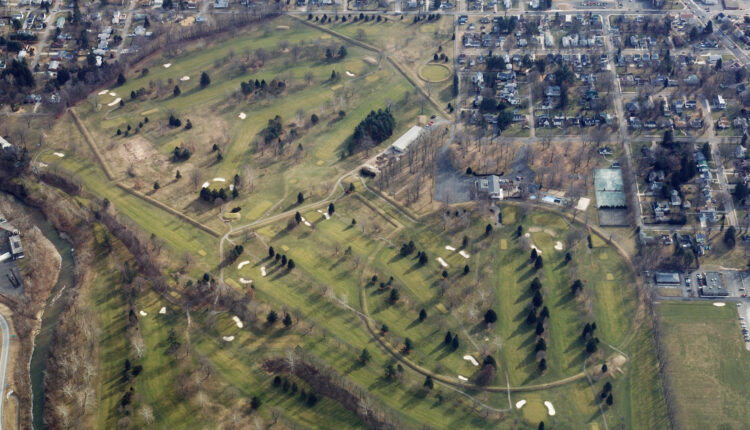Ohio State University: Newark Earthworks Receives UNESCO World Heritage Designation
When Elizabeth Weiser came to Newark to interview for a job at The Ohio State University’s regional campus, she was offered a tour of local neighborhoods and schools. She declined both in favor of something else.
“I said, ‘You know, I’d like to see the Newark Earthworks,’” said Weiser, a distinguished professor in the College of Arts and Sciences at the Newark campus. “I’d heard about it for decades.”
At the time, that was a rare request for an English professor, but almost 20 years after her first visit to Newark, Weiser could celebrate these same earthworks earning World Heritage status from the United Nations Educational, Scientific and Cultural Organization (UNESCO).

In September, the Hopewell Ceremonial Earthworks sites, which includes the Newark Earthworks, became Ohio’s first UNESCO site and just the 25th in the United States. Other World Heritage Sites include the Taj Mahal, the Great Barrier Reef and Stonehenge.
The effort to earn that title was over a quarter century in the making, Weiser said, and involved support from organizations all over the state. While it was the U.S. Department of the Interior that applied in March of 2022, many Newark colleagues, like Weiser, contributed time and talent behind the scenes.
Ohio State’s Newark Earthworks Center has played an integral role in uniting diverse supporters to promote the significance of the Hopewell efforts. The center was founded by Richard Shiels, emeritus associate professor in the Department of History, and Marti Chaatsmith (Comanche/Choctaw), associate director of the center, and is now directed by John Low (Pokagon Band of Potawatomi), associate professor in the Department of American Indian Studies.
“I’m the smallest cog in this,” Weiser said. This summer she, Shiels, and local historian Timothy Jordan published a book gathering together the reflections, teachings, and photos of 25 of those key supporters. “In addition to Ohio State faculty, we had staff from the Ohio History Connection, local and state people who’ve been involved for decades, Native Americans with ancestral ties to the site, even Ohio’s former First Lady Hope Taft.”
Hopewell refers to an Indigenous movement that took hold in eastern North America around 2,000 years ago. Sites like the Newark Earthworks served as cultural and spiritual gathering points for Hopewell participants from across the country.
“This site was clearly attracting visitors, pilgrims, tourists, in the same way that a medieval cathedral would,” Weiser said. “You’re bringing people from all over.”
At one time, there were as many as 600 sites in Ohio that had earthworks, but with the removals of Indigenous people as European settlers moved farther west, many sites were damaged or destroyed. This makes the preservation of the Hopewell Ceremonial sites that much more important.

The UNESCO title doesn’t come with any money, Weiser said, but the designation does generate tourism dollars, which can go toward new facilities and learning aids.
“People come to World Heritage Sites,” she said. “But our site needs interpretation for people to understand it. Our local museum is much too small. The book is one step, but we need a more comprehensive approach.”
Weiser, who studies rhetoric, believes that Americans can be divorced from the history of our country and that the earthworks are a key piece to re-narrating that story.
“One of the things I’ve studied is the way national museums around the world tell people their own histories,” she said. “When do other countries think of their history starting? The fact that we are so separated from the story of this continent, especially before Europeans arrived, says a lot.”
And it’s not just the history we need to appreciate, she said. Like students at the Newark campus today, people were using the earthworks to study the world around them.
“The earthworks are aligned to a lunar cycle that is a generation-long,” she said. “People have been looking at the sky in this area for thousands of years and they weren’t just saying, ‘Wow.’ They were doing science; they were interacting with the cosmos.”

